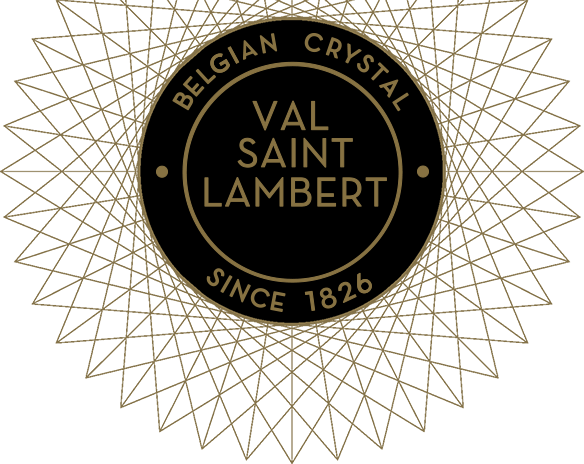1826
The first glassworks is opened. Under the management of chemist François Kemlin and engineer Auguste Lelièvre, the Val Saint Lambert glassworks is the first (and to this day the only) manufacturers of belgian crystal.
1841
Val Saint Lambert is awarded a gold medal for its pure, refined and coloured crystal at an exhibition of Belgian industrial products in Brussels.
1894
Val Saint Lambert comes to prominence at the World's Fair held in Antwerp. It presents its crystal creations with geometric patterns for the first time. They receive a great deal of praise, and are phenomenally successful. The ingenuity of the cut, characterised by intricate geometric patterns over the entire surface, allow Val Saint lambert to continue growing, developing and to become an international brand.
1894
Reaching a height of 2,25 metres, weighing 200 kilos and composed of 82 parts made of crystal, "le vase des neuf provinces" is a masterpiece of technical and artistic prowess. It takes a team of thirty people 2,000 hours to produce.
1900
At the end of the 19th century and the start of the 20th century, Val Saint Lambert is at its peak. Nearly 75% of its production is exported, with its main clients being Russian tsars.
1901
Philippes Wolfers, a Belgian goldsmith, sculptor and designer, brings art nouveau to the world of crystal. The vase "Crépuscule" ("twilight"), representing a bat using several layers of glass, is simply a masterpiece.
1900 – 1925
Two monumental crystal chandeliers are made by Val Saint Lambert for the hall of the Maharaja of Gwalior's Palace in India. Weighing 3,5 tonnes each and measuring 13 metres in height, these are the largest crystal chandeliers in the world at the time. Legend has it that the architect had ten elephants walk on the first floor before the chandeliers were hung, in order to test whether the ceiling would take the weight of the crystal.
1908
Val Saint Lambert introduces double-coloured cut crystal, an innovation that gave Belgain crystal its international acclaim, which it still has today.
1914 – 1918
The First World War means the glassworks has to close for four years. It re-opens at the end of the war, but a large segment of the market has been lost with the fall of the tsars in Russia.
1926
Val Saint Lambert celebrates its 100th birthday. Employing over 5,000 employees, the glassworks gains new ground by unveiling innovative collections in the art deco style.
1930
With an export market representing 90% of its turnover, the Great Depression hits Val Saint Lambert hard.
1945
Bombing during the Second World War destroys the glassworks and causes financial and structural problems for the company.
1950
Although still a luxury product, crystal is increasingly becoming a household item.
1970 – 1980
Val Saint Lambert collaborates extensively with external designers, including Samuel Herman, Yann Zoritchac, Borek Sipek, Philippe Starck, Frans Van Praet and Martin Szekely
1992
Frans Van Praet dreams up the iconic "Sevilla Chair" in crystal for the Belgian pavilion at the World's Fair in Spain.
2010
Val Saint Lambert surprises attendees ath the Maison & Objet interior design show in Paris with a new, younger, image, and takes the first steps towards a global come-back... The interior designer Eric Delvaux creates the world's tallest rocket made of crystal, standing at 2.6 metres, for the Belgain pavilion at the World's Fair in China.
2014
Belgian manufacturer, Jacques Somville, takes over Val Saint Lambert.
2018
The entrepreneur, George Arthur Forrest, takes over 75% of Val Saint Lambert glassworks. This takeover is part of a long-term vision for the company, the aim of which is to ensure the company's sustainability and to continue providing employment.
